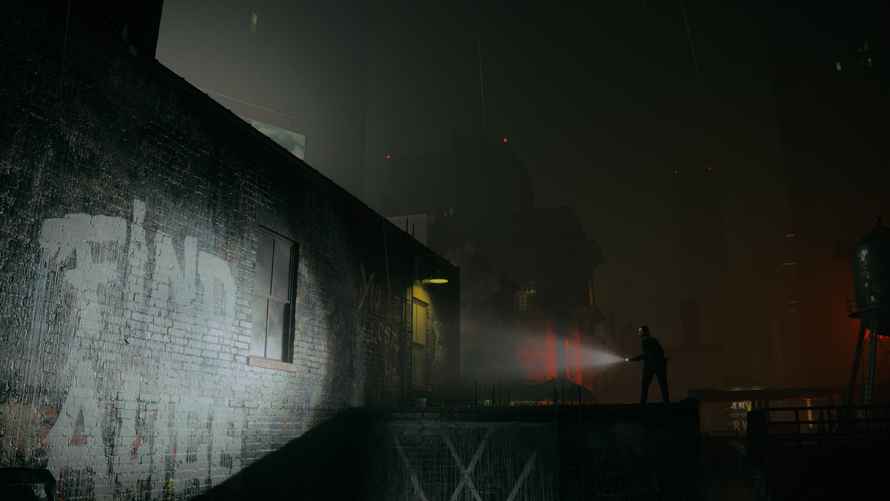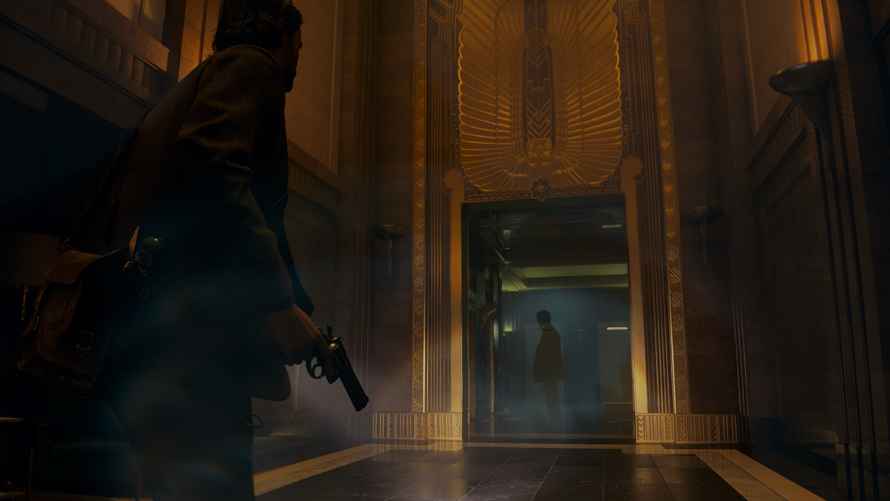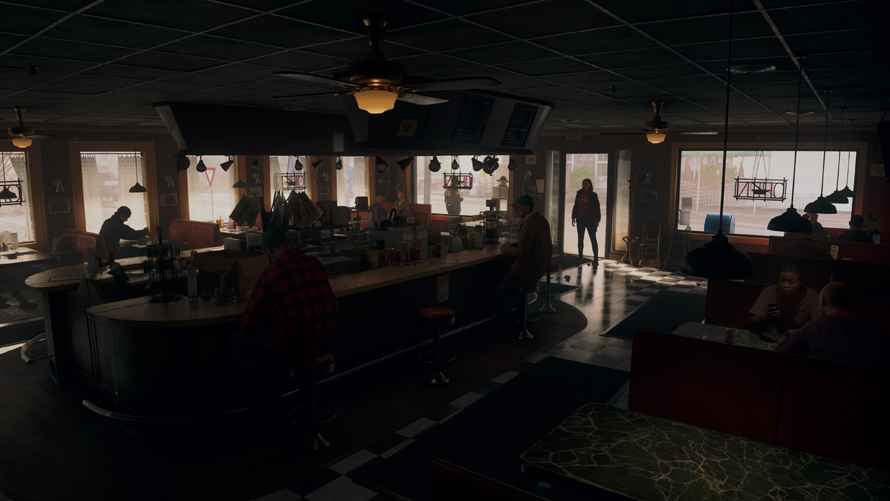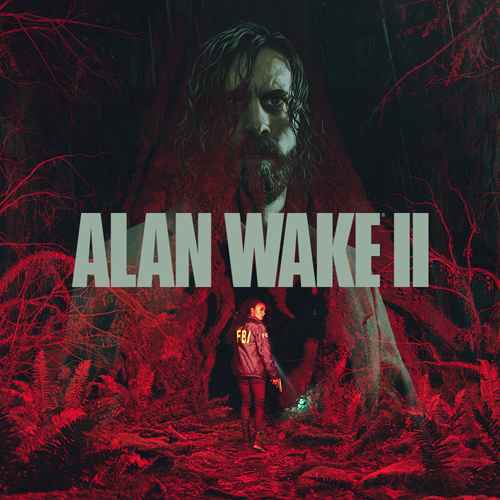Alan Wake 2 Review. No Spoilers.
2010 was a damned good year for games. A list of releases includes Red Dead Redemption, Fallout New Vegas and Mass Effect 2. It also includes a then-obscure game called Alan Wake, a dark, reality-twisting action game from Remedy, then best known for Max Payne. At the time, many gamers passed on Alan Wake, but in the thirteen years since its release, a great number of gamers have discovered it. The original Alan Wake has become a cult classic. With Alan Wake 2, Remedy brings together the worlds of Quantum Break, Control and the first Alan Wake game into a cohesive universe and pushes its signature storytelling forward.
A Whole Newish World
Players of those other Remedy games will notice both obvious and subtle references to characters and events, especially and unsurprisingly, from the first Alan Wake. The developer has emphasized that new players can enter the world of Alan Wake unfamiliar with the original. I suppose this is literally true, but having a point of reference to the first game helps the player understand the context of the sometimes incredibly trippy and unsettling sequel. It’s also a point of reference for seeing how director Sam Lake and his team have evolved their narrative and gameplay chops.
Rest assured, we won’t be going deep into spoiler territory for a couple of reasons. First, the story has so many puzzles, twists, turns and reality bending surprises that it would be criminal to take away the player’s own discovery. Second, the structure of Alan Wake 2’s narrative means that one person’ play through will differ in small and large ways from someone else’s. Alan Wake 2 is a game that begs multiple runs through its surreal world.

The basics, however, are no secret. In the original game, Stephen King-like writer Alan Wake comes to the Pacific Northwest as a diversion and to seek a cure for debilitating writer’s block. There, he discovers a town overcome by a supernatural force called The Dark Presence, and townspeople corrupted into shadowy monsters called The Taken. When his wife, Alice, drowns in Cauldron Lake, Wake descends into am hallucinogenic break from reality that may or may not be generated by a new book he has no memory of writing. By game’s end, Wake has discovered Alice didn’t drown but is trapped in a supernatural dimension called The Dark Place. In order to save his wife, Wake enters the The Dark Place in her stead.
Flash Forward
Alan Wake 2 resumes the story thirteen years later, with the writer still missing and Bright Falls beset by a series of grisly murders. The sequel introduces FBI agent Saga Anderson, who serves dual purposes. She helps the player into the Alan Wake narrative backstory by discovering it herself. She’s grounded in everyday reality. Her investigation into the murders and the Taken in some ways parallel Alan’s journey in the first book. Alan Wake’s trapped in a Dark Place version of New York, and his goal is to free himself. After the introductory chapters, the player alternates freely between Saga and Alan and has some choice about the ordering of chapters.
What seems like a simple murder investigation quickly spirals into multiple layers of reality and the supernatural. Finding mysterious pages of a manuscript, Saga wonders if her reality is being written in real time. Along with the player, she pieces clues together on the white board of her imagination. She’s smart and intuitive. Her conclusions and theories change as new evidence and connections emerge. Meanwhile, Alan is writing and rewriting his experience in The Dark Place. He strings together plot beats in order to move his story forward and inch closer to escape. Altogether, Alan Wake 2 enjoys some sophisticated, innovative storytelling.

Tools of the Trade
Unlike the first title, Alan Wake 2 is a straight up survival horror game. This means the influences aren’t just Stephen King and Twin Peaks, but Resident Evil and Silent Hill. The classic hallmarks of the genre are all there. Ammo and flashlight batteries are scarce. Weapons are slow to reload and awkward to use with precision. Very effective jump scares and an overwhelming mood of tension and dread are in full force. Especially at the normal and hard difficulty settings, enemies are fast, brutal and terrifying. The protagonists never feel even slightly overpowered. Despite some obvious influences, though, combat can occasionally frustrate, thanks to some awkward and less-than-fluid animations, movement and controller assignments.
As in Alan Wake, both Saga and Alan use light to cripple their enemies and provide a brief opportunity to attack. Additionally, Alan has an antique light — related to the Clicker from the original game — that can shift his reality between different spaces, times and dimensions. Very similar to the lamp in Lords of the Fallen, Alan uses the lamp’s light to solve puzzles and reveal another reality with hidden doors, rooms and exits.
Speaking of puzzles, they’re an important component to both Saga and Alan’s stories. Solving them relies on careful observation, some backtracking and archived information. In general, they’re not too gamey. Only now and then do they seem like unnecessary, momentum-killing busywork. My biggest complaint about the game was that moving forward often meant completion of a series of tasks that often resulted in a lot of meandering through the environment, draining resources in the process. Both Saga and Alan have maps, but a little optional direction-pointing would speed things along.
Shiny
Alan Wake 2 has an incredibly complex narrative and thematic structure that defeats easy summary. That said, it’s conveyed through a masterful use of tools. If a technique has been used in movies, books or video games to tell a story, you’ll find it in Alan Wake 2. Particularly effective are the game’s full motion video sequences in the Alan Wake chapters. The contrast between Saga’s grounded reality colored by the supernatural and Alan’s surreal dream world is engaging, sometimes perplexing but always fascinating.

Creative director Sam Lake and his team have outdone themselves in the visual presentation, art design, writing and acting. They’re all exemplary and bordering on amazing at times. Bright Falls and the Pacific Northwest drip with foggy greyness and Twin Peaks-like mystery and character. Alan’s dreamscape New York is awash in neon, graffiti and beat down detail. There are genuinely disturbing images and moments of explicit gore and violence, but most of the tension comes from the artful and technically adroit use of lighting design, cinematic staging and special visual effects.
The actual writing varies from smart and literary to a bit bland, but generally seems believable. The large cast, many of whom return from the original game, is uniformly excellent. I don’t think there was a poorly delivered line from anyone. Characters were well-written and memorable. Likewise, the environmental audio and music were both equal to the task of setting the mood, directing the player’s attention and creating a sense of a believable space. Alan Wake 2 looks genuinely like a next gen game.
The Cure for Hiccups
I played Alan Wake 2 on the PS5 and experienced few technical issues or framerate drops, even in quality mode. Aside from subtitles, there are only a few accessibility or graphics options, but the audio options are a little more expansive. There has been some controversy around the game’s very high system demands on PC, Epic Games Store exclusivity and digital only format. None of those issues impacted my experience on console.
Alan Wake 2 is smartly written, visually arresting and thematically complex. It can be obtuse and perplexing, but that’s a feature, not a bug. It brings together not only the worlds of several Remedy games, but demonstrates all the narrative and gameplay lessons the studio has learned over the last thirteen years. Alan Wake 2 rewards fans of the first game for their patience, and invites new players along for a wild, sometimes terrifying and mind-bending ride.
***PS5 code provided by the publisher for review***
The Good
- Amazing visuals
- Excellent acting
- Complex narrative
- Great atmosphere
- Effective survival horror mechanics
The Bad
- Some meandering
- Pacing can be inconsistent
- Clunky combat

